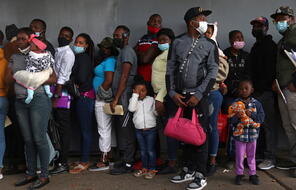Demographic Trends Shaping the US and the World in 2018
Subject
- Civics & Citizenship
- Social Studies
Language
English — USUpdated
This reading supplements the reading Shifting Demographics in the United States. It provides excerpted information from the Pew Research Center about global migration and immigration as of 2018. 1
There are more than 250 million migrants worldwide, according to the latest data from the United Nations on the number of people living outside their birth countries in 2017. Sub-Saharan African nations account for eight of the ten fastest-growing international migrant populations since 2010. . . . At least a million sub-Saharan Africans have moved to Europe since 2010. At the country level, Syria had the fastest-growing migrant population in the world, and the Pew Research Center estimates that six in ten people from the country’s pre-conflict population have been displaced.
New refugee arrivals are down in the United States, and their religious composition has changed. The number of refugee arrivals in the US declined after 2016, even as the global refugee population increased. This decline was also widespread across the US, with declines in 46 states during the beginning part of fiscal year 2017 (which began in October 2016). Furthermore, since 2016, the share of refugees who are Christian has risen, while the share who are Muslim has declined, according to a Pew Research Center analysis of US State Department data. Most refugees coming to the US as of the end of fiscal year 2017 were from the Middle East and Africa.
International arrivals to the United States have risen among some groups. New foreign student enrollment at US colleges and universities doubled between 2008 and 2016, from 179,000 to 364,000, far outpacing growth in overall college enrollment. Growth has been stronger at public schools than private schools. Students from China, India, and South Korea accounted for more than half (54%) of all new foreign students pursuing higher education degrees in the US in 2016.
In recent years, there has also been a rise in immigrants to the US from El Salvador, Guatemala, and Honduras, whose numbers rose by 25% from 2007 to 2015. The black immigrant population, though small, is also growing: there were 4.2 million black immigrants living in the US in 2016, up fivefold since 1980.
- 1The following data is excerpted from Anthony Cilluffo and D’Vera Cohn, “7 demographic trends shaping the U.S. and the world in 2018,” Pew Research Center, Fact Tank: News in the Numbers (blog), April 25, 2018.
How to Cite This Reading
Facing History & Ourselves, “Demographic Trends Shaping the US and the World in 2018”, last updated March 25, 2019.













